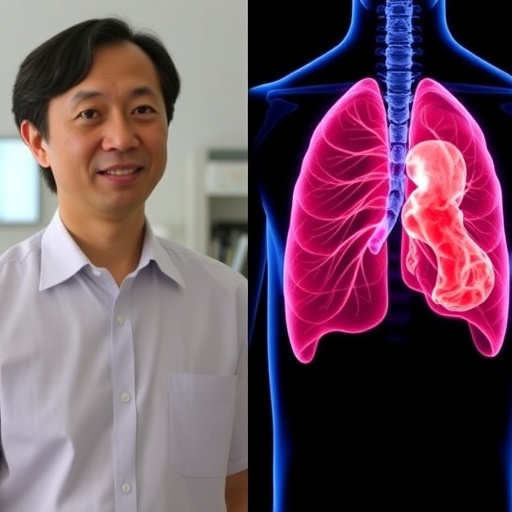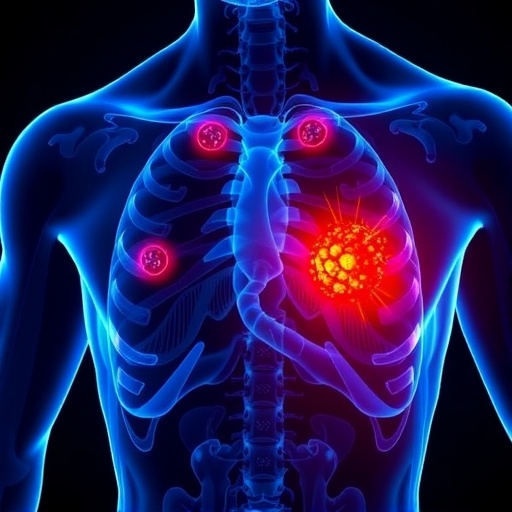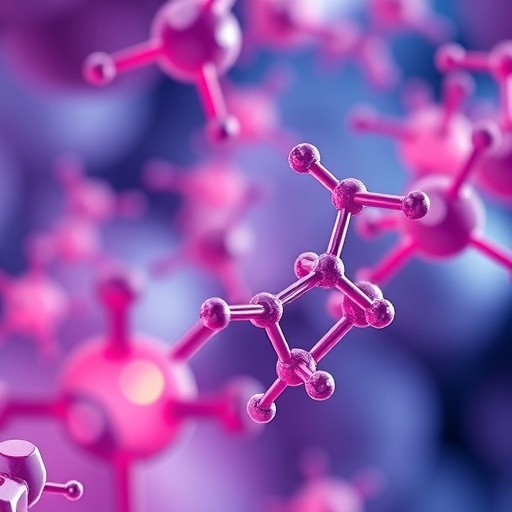
Los Angeles, CA – August 14, 2025 – In a groundbreaking discovery that could revolutionize the management of cancer-associated cachexia (CAC), researchers at the Terasaki Institute for Biomedical Innovation have elucidated the pivotal role of the vagus nerve in modulating the brain-liver axis to curb the progression of this debilitating syndrome. CAC, characterized by severe muscle wasting and metabolic dysfunction, contributes to over one-third of cancer-related mortalities worldwide, and to date, has remained an intractable clinical challenge. The newly published study in Cell, spearheaded by Dr. Aliesha O’Raw, Principal Investigator at the Institute, provides compelling evidence that targeted vagal nerve modulation can significantly restore metabolic balance, mitigate systemic inflammation, and synergize with chemotherapy to enhance overall survival in preclinical cancer models.
The crux of the study lies in the mechanistic dissection of how cancer precipitates systemic inflammation that ultimately impairs neural control of hepatic function. The vagus nerve, a critical parasympathetic conduit, orchestrates communication between the central nervous system and peripheral organs, including the liver. Disruption of this neural pathway manifests as diminished vagal tone, resulting in the downregulation of hepatocyte nuclear factor 4 alpha (HNF4α), an essential transcription factor that governs liver protein metabolism. Loss of HNF4α function destabilizes hepatic homeostasis, amplifying inflammatory cascades that fuel the cachectic phenotype observed in cancer patients.
Using a robust experimental framework involving surgical, chemical, electrical, and transcutaneous stimulation approaches, the researchers demonstrated that reinstating vagal nerve activity restores the integrity of the brain-liver axis. This intervention normalizes hepatic metabolic functions, attenuates systemic inflammation, and abrogates muscle wasting associated with cachexia. Remarkably, the integration of vagus nerve modulation with standard chemotherapeutic regimens produced synergistic effects, significantly improving therapeutic efficacy and survival outcomes in animal models.
.adsslot_Yg39zC7Tjk{width:728px !important;height:90px !important;}
@media(max-width:1199px){ .adsslot_Yg39zC7Tjk{width:468px !important;height:60px !important;}
}
@media(max-width:767px){ .adsslot_Yg39zC7Tjk{width:320px !important;height:50px !important;}
}
ADVERTISEMENT
Dr. O’Raw’s research harnesses the advances of neuroimmunology and metabolic biology to illuminate the bidirectional communication between the nervous system and liver metabolism in the context of cancer pathology. The findings challenge the prevailing paradigm that cachexia is an irreversible consequence of tumor burden, instead unveiling a modifiable neuro-metabolic axis amenable to intervention. By targeting the vagus nerve, the study offers a novel therapeutic avenue that transcends conventional pharmacologic strategies aimed solely at tumor eradication.
The implications of vagal neuromodulation extend beyond cachexia management; by mitigating systemic inflammation and metabolic dysregulation, this approach could potentially improve patients’ responsiveness to chemotherapy and other oncologic treatments. The multifaceted role of the vagus nerve in regulating organ function signifies that neuromodulation could be leveraged as an adjunct therapy to restore homeostasis, enhance quality of life, and reduce cancer-related morbidity.
Technically, the team implemented a variety of vagus nerve stimulation (VNS) modalities to delineate the optimal parameters for therapeutic efficacy. Surgical vagotomy allowed for precise manipulation of cervical vagal fibers, while chemical neuromodulators were employed to fine-tune vagal signaling pathways. Additionally, pioneering non-invasive transcutaneous VNS delivered through the cervical skin highlights the clinical translatability of this method. Electrophysiological measurements corroborated restoration of vagal tone post-intervention, with corresponding normalization of liver gene expression profiles, particularly the upregulation of HNF4α and downstream metabolic enzymes.
Furthermore, the study elucidated the downstream molecular events linking vagal signaling to systemic inflammatory status, notably the suppression of pro-inflammatory cytokines that exacerbate muscle catabolism and energy imbalance in CAC. This neuroimmune crosstalk underscores the complex interplay between nervous and immune systems and anchors the concept of neural control as a therapeutic checkpoint in cancer cachexia.
“We are harnessing the intrinsic power of the nervous system to recalibrate organ function,” explained Dr. O’Raw. “Our data convincingly demonstrate that vagus nerve modulation can rescue hepatic metabolic function compromised by cancer-induced inflammation, thereby halting cachexic progression. This is an exciting step toward non-invasive, patient-centric treatments that address the root causes of cachexia rather than just the symptoms.”
Dr. Ali Khademhosseini, Director and CEO of the Terasaki Institute, noted the transformative potential of this work in oncology: “Cachexia has long been a pervasive and devastating complication in cancer treatment. This research offers a viable strategy that could dramatically shift the therapeutic landscape, improving both survival and quality of life for patients worldwide.”
The study further explores the strategic integration of VNS with chemotherapeutic agents, revealing a potentiated therapeutic landscape wherein neuromodulation enhances drug efficacy, possibly through improved metabolic support and immune regulation. These findings advocate for future clinical trials to validate the safety and efficacy of combined modalities in human subjects.
Importantly, the translational prospects of this research are promising given the development of wearable and implantable VNS devices. Non-invasive transcutaneous stimulation offers an accessible means for outpatient therapy, minimizing procedural risks while maximizing patient compliance. This modality could redefine clinical approaches to cachexia, transforming it from an intractable syndrome into a manageable condition.
The identification of HNF4α as a critical molecular node linking vagal disruption to liver metabolic impairment provides a valuable biomarker for monitoring disease progression and therapeutic response. Targeting this molecular axis not only extends our understanding of CAC pathophysiology but also opens avenues for targeted pharmaceutical development.
This pioneering work at the convergence of neuroscience, immunology, and oncology marks a significant breakthrough that redefines our understanding of systemic disease regulation via neural circuits. By illuminating the brain-liver axis as a therapeutic target, Dr. O’Raw and colleagues lay the foundation for innovative clinical interventions that could alter the trajectory of cancer treatment and survivorship.
As research progresses toward clinical application, the collaborative efforts of multidisciplinary teams spanning neurobiology, oncology, and biomedical engineering will be vital in translating these findings from bench to bedside. The promise of vagus nerve modulation as a standard adjunctive treatment represents a beacon of hope for millions suffering from the devastating effects of cancer-associated cachexia.
Subject of Research: Animals
Article Title: Vagal Blockade of the Brain-Liver Axis Deters Cancer-Associated Cachexia
News Publication Date: August 14, 2025
Web References: https://www.cell.com/cell/abstract/S0092-8674(25)00805-0#:~:text=This%20vagal%20dysregulation%20disrupts%20the,inflammation%2C%20resulting%20in%20cachectic%20phenotypes
References: DOI: 10.1016/j.cell.2025.07.016
Image Credits: Terasaki Institute for Biomedical Innovation
Keywords: Cancer, Vagus nerve, Inflammation, Liver, Metabolism, Neurons
Tags: brain-liver axis in cancercancer-associated cachexia treatmentchemotherapy and cachexiahepatocyte nuclear factor 4 alphametabolic dysfunction in cancermuscle wasting syndrome in cancerneural control of hepatic functionpreclinical cancer modelssystemic inflammation and cancertargeted therapy for cachexiaTerasaki Institute cancer researchvagus nerve modulation





